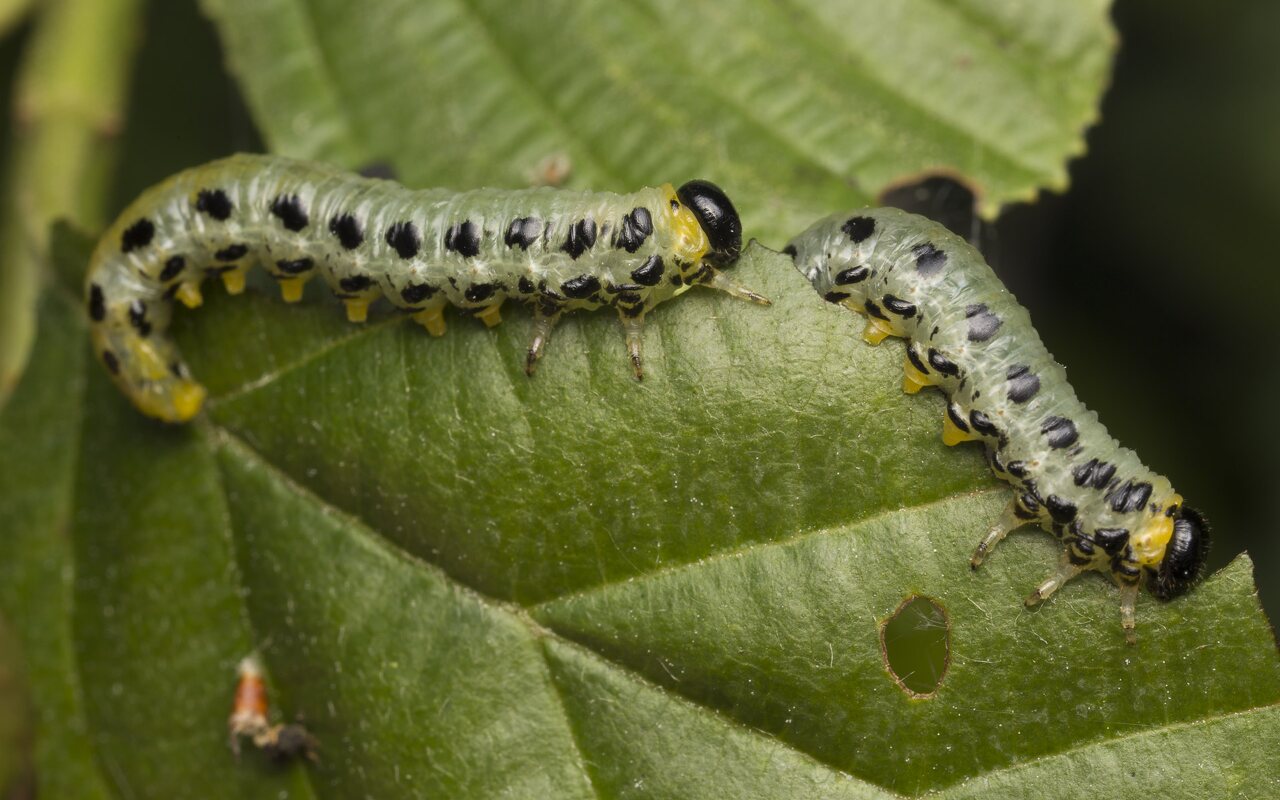
Craesus septentrionalis larvae · šiaurinis beržinis pjūklelis, lervos
- Nematus septentrionalis, Croesus septentrionalis
- flat-legged tenthred, birch sawfly
- Breitfüßige Erlenblattwespe
- šiaurinis beržinis pjūklelis
- Eelzebladwesp, Elzenbladwesp
- płast brzozowiec
- en.wikipedia.org/wiki/Craesus_septentrionalis
- sawflies.org.uk/craesus-septentrionalis
- gbif.org/species/4491863
This sawfly lays its eggs on a number of different host trees including alder, ash, birch, hazel, hornbeam, maple, poplar, rowan, wild service tree, whitebeam and willow. The larvae stay together in groups and feed on the margins of leaves. When disturbed, they characteristically cling to the leaf with the front three pairs of legs and curl their bodies upward in a "S" shape. When the larvae are numerous, young trees may be completely defoliated. When mature, the larvae drop to the ground and pupate in the soil. There may be several generations of larvae between spring and autumn and the insect overwinters underground in the pupal state.
‥